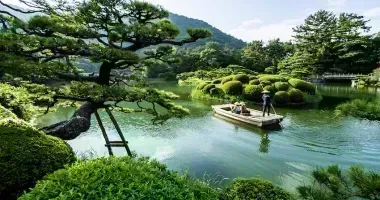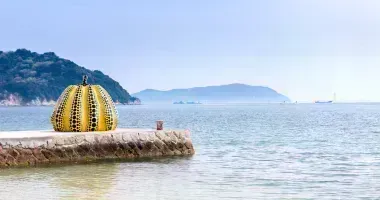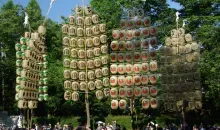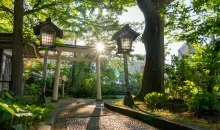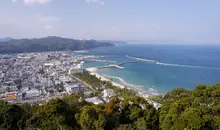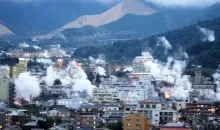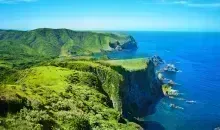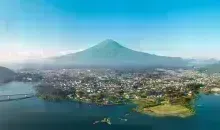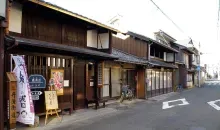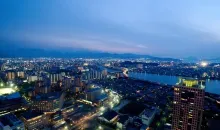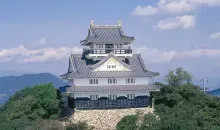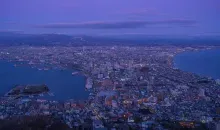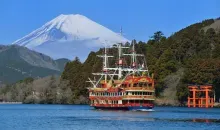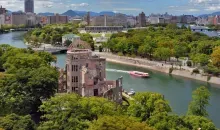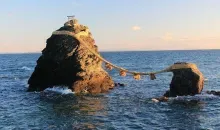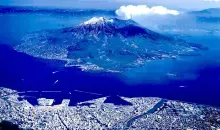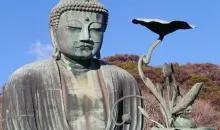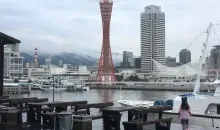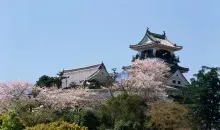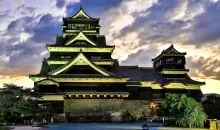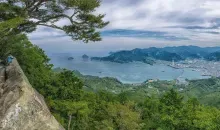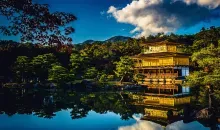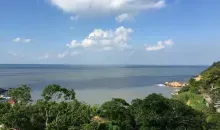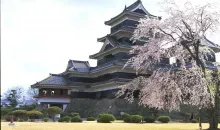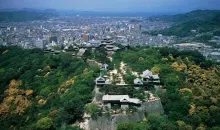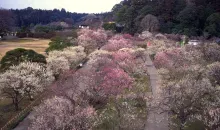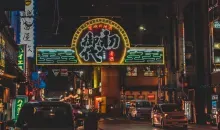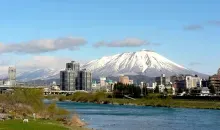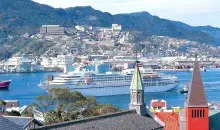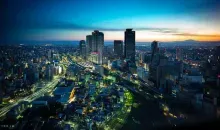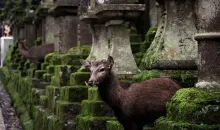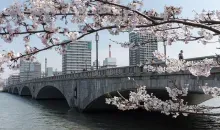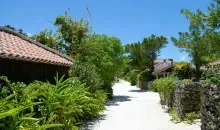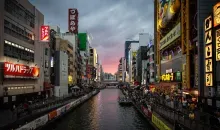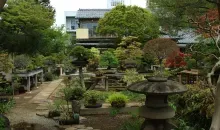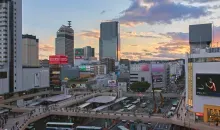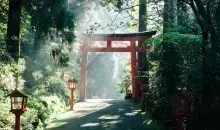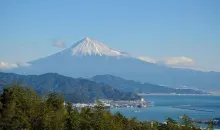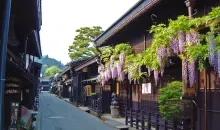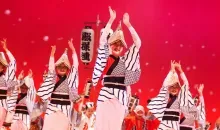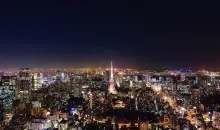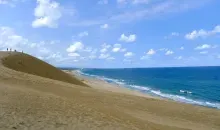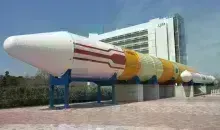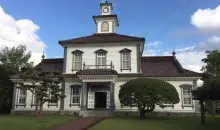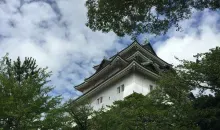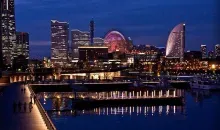Takamatsu 高松
Local Time 01:34
Symbol : sunny_cloudy
Temp : 5.8°C
Date : Today
Symbol : sunny_cloudy
Temp : 10.1°C
Date : Tomorrow
Symbol : cloudy
Temp : 11.2°C
Date : Saturday
Symbol : sunny
Temp : 14.3°C
Date : Sunday
Local Time 01:34
Symbol : sunny_cloudy
Temp : 5.8°C
Date : Today
Symbol : sunny_cloudy
Temp : 10.1°C
Date : Tomorrow
Symbol : cloudy
Temp : 11.2°C
Date : Saturday
Symbol : sunny
Temp : 14.3°C
Date : Sunday
Between Honshû and Shikoku
This former walled city of the Matsudaira clan, Takamatsu, has a beautiful garden and is a good starting point for visiting the east of the island of Shikoku. Located in the north of the island, Takamatsu is the link between the main island of Honshû and that of Shikoku. The journey can be done by car or train since 1988, thanks to the construction of the Great Seto Bridge, which seems to leap from islet to islet to connect Takamatsu and Okayama.
Takamatsu city
Takamatsu is the capital of Kagawa Prefecture and, with a population of approximately 420,000 people, the second-largest city on Shikoku Island (after Matsuyama), located on the north coast of the island.
With the completion of the Seto Ohashi Road and Rail Bridge in 1988, Takamatsu became the gateway from Shikoku Island to Japan's main island, Honshu. Takamatsu is also a ferry hub for the islands of the Seto Inland Sea.
Ritsurin Park, created by the Matsudaira clan who controlled the fortress city of Takamatsu during the Edo period (1603-1868), is the city's most famous attraction.
The History of Takamatsu and Tamamo Castle
Little remains today of Takamatsu Castle, also known as Tamamo Castle, located in Tamamo Park, not far from the Central Station.
Takamatsu's strategic position secured his wealth in feudal times and prompted the local warlord to build Takamatsu Castle. Built from 1588 to 1590 by Chikamasa Ikoma, the castle became in 1642 a residence of the Matsudaira clan, parents of the ruling shogun Tokugawa.
The castle is particularly remarkable because facing the Seto Inland Sea, between Honshu and Shikoku Islands, its moat is filled with seawater sucked in through lock gates.
The moat and stone walls are still there, along with three turrets and a gate. Tsukimi Yagura's turret, which faces the sea, was built to observe the moon, hence its name (tsuki: moon; mi: see). Tamamo Park has a pleasant dry stone garden and is planted with cherry and pine trees.
The castle was gradually demolished during the Meiji era (1868-1912) and suffered further damage during World War II.
The Ritsurin garden
Ritsurin Koen and its 75 acres of wooded rolling hills, ponds stocked with carp, and paved paths are the local pride. It is the main attraction of Takamatsu and remains one of the finest and largest promenade gardens in the country.
Instituted in 1625 under the orders of Lord Ikoma Takatoshi, the creation of Ritsurin took more than a century, the time to make a superb example of a Japanese garden. Evolving to the rhythm of the nature that inhabits it, the vast garden is divided into two distinct styles: traditional Japanese to the south and west to the north.
In addition to the boutiques and handicraft exhibitions, the Kikugetsu-tei Pavilion offers a zen break in a unique setting: matcha green tea, and a view of a meticulously pruned pine forest.
Also in the section near the East Gate is the Sanuki Handicraft Museum which showcases local crafts including basketry and ceramics.
- Access: To get to the garden, take a bus from Takamatsu station to Ritsurin-mae stop or a JR train to Ritsurin Park Kitaguchi. You can also walk for ten minutes from Kotoden Ritsurin station.
Takamatsu festivals
Takamatsu holds a number of festivals throughout the year. In August, the Takamatsu festival is marked by fireworks and street dancing, in October, the autumn festival is marked by a parade of samurai from the Edo era and at the end of the year, the Takamatsu winter festival covers the city illuminated with colorful lights.
- Read also: Matsuri and events in Japan
The culinary specialty of Takamatsu, the paradise of udon
From the port, you can take a short twenty-minute journey to a small island with wooded mountains: Megijima, or Onigashima ("Demon Island"), referring to the famous legend of Momotaro, a boy sent by the gods to fight an evil monster on the island.
To the east, a few minutes away by train, the volcanic plateau of Yashima offers stunning views of the Seto Inland Sea, the site of a famous naval battle between the Minamoto and Taira clans in 1185.
To satisfy an appetite whetted by the sea air, the town's restaurants offer the local specialty: Sanuki udon. These thick noodles in a hot broth are made from wheat grown on the island, and are a reminder that Shikoku is considered to be an "udon paradise!"
- Read also: Japanese udon noodles
Visits to do in and around Takamatsu
Yashima - The area is famous for the Battle of Yashima, a prelude to the historic Battle of Dannoura in the Shimonoseki Strait between the Taira and Minamoto clans in 1185. Today, beautiful views can be admired from a 293 meters high plateau and you can visit there Yashima-ji temple, number 84 of the 88 sacred temples of Shikoku, an ancient pilgrimage route that circles the island of Shikoku, which has relics of the battle and the "pool of blood", where the Minamoto warriors are said to have washed their swords from the blood of their enemies.
Shikoku Mura, has an interesting collection of over twenty traditional buildings brought back from all over Shikoku and the surrounding islands and reconstructed in one place. Here you'll find a thatched-roof kabuki scene from Shodoshima, a rope bridge (kazurabashi) replica from the Oboke Gorge area, an Edo-era border post, and many other restored buildings. The Shikoku Mura Gallery, set in a beautiful water garden and designed by Tadao Ando, features modern art by Picasso and Chagall, among others, as well as regular exhibitions of Asian art.
East of Yashima is the traditional stonemason village of Mure. This is where the famous Japanese-American sculptor and designer Isamu Noguchi set up his home and studio in the 1970s. The Isamu Noguchi Garden Museum contains 150 of his sculptures, some of which are unfinished.
The impressive Marugame Castle is one of the twelve original castles still standing in Japan.
Kotohira, an ancient mountain-top sanctuary dedicated to the god of sailors and travelers. Great views await at the top after the arduous climb of hundreds of steps
Zentsuji Temple is number 75 and the largest of the 88 sacred temples of Shikoku. The temple is the renowned birthplace of Kobo Daishi (aka Kukai), the founder of the Koyasan temple complex in Wakayama and one of the most influential Buddhist priests in Japanese history.
How do I get to Takamatsu?
By Air - Takamatsu Airport is located 16 km south of the city. Buses run to JR Takamatsu Station (45 minutes). A taxi costs around 4000 yen. There are flights to Tokyo, Kagoshima, and Naha (Okinawa), with an international flight to Seoul in Korea.
By Train - JR express trains pass through the Seto Ohashi Bridge from Takamatsu Station to Okayama Station (55 minutes), as well as connections inside Shikoku on the JR Kotoku Line to Tokushima (1 hour), the JR Yosan Line to Matsuyama (20 hours, 30 minutes) and the JR Dosan Line south to Kochi (2 hours, 30 minutes).
By Bus - Takamatsu Station is a highway bus terminal for buses heading to various destinations in Shikoku and beyond. There are freeway bus services to Shinjuku Bus Station (Busta Shinjuku) in Tokyo (9 hours, 30 minutes), Nagoya (7 hours, 45 minutes), and Yokohama (9 hours). In addition, there are highway buses to Fukuoka (9 hours), Namba and JR Osaka Station (3 hours, 15 minutes), Hiroshima Bus Station (3 hours, 30 minutes), Kochi (2 hours, 10 minutes), and Matsuyama (2 hours, 40 minutes).
By Ferry: There are ferry connections from Takamatsu Port to Kobe, Okayama, and also to Naoshima, Oshima, Shodoshima, Megishima, and Ogishima (Megijima & Ogijima) in the Inland Sea.
Interested by Takamatsu
Discover other cities to explore





